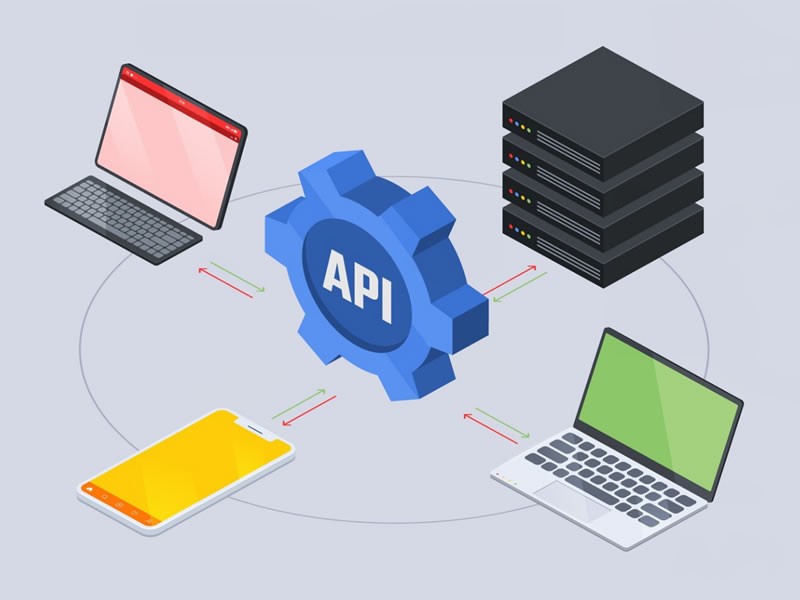Insight Blog
Agility’s perspectives on transforming the employee's experience throughout remote transformation using connected enterprise tools.
11 minutes reading time
(2289 words)
What is the difference between IaaS, PaaS, and SaaS in cloud computing
The question today is What is the difference between IaaS, PaaS, and SaaS in cloud computing?
You're probably familiar with SaaS, but how well-versed are you in PaaS and IaaS? in that case the question today is What is the difference between IaaS, PaaS, and SaaS in cloud computing?
In this era of increasing digital transformation, cloud computing services have emerged as a pivotal trend. Many of us are actively engaged in constructing, generating, and storing data in the cloud.
These services typically operate on a pay-per-use model, which has gained popularity due to its capacity to minimize the substantial upfront costs associated with establishing and managing IT infrastructure.
Continue reading to gain insights into the distinctions between SaaS, PaaS, and IaaS, along with an exploration of their respective advantages, disadvantages, and the most suitable scenarios for their utilization.
What is IaaS?
IaaS, or Infrastructure as a Service, is a form of cloud computing that delivers virtualized computing resources like servers, storage, and networking via the Internet.
Businesses have the option to rent these resources on a pay-as-you-go basis, eliminating the need to purchase and manage their own IT infrastructure.
IaaS is a favored choice for businesses, regardless of their size, due to a range of advantages, including:
- Cost-effectiveness: Businesses can cut costs related to hardware and software by leveraging IaaS solutions.
- Scalability: IT resources can be easily scaled up or down to meet evolving business requirements.
- Accessibility: Businesses can access their IT resources from anywhere globally as long as they have an internet connection.
- Reliability: IaaS providers offer robust reliability and uptime.
According to a 2023 study by Canalys, 82% of businesses are already utilizing IaaS, and this figure is anticipated to rise to 92% by 2025.
Key features of IaaS include:
- Self-service provisioning: Businesses can independently provision and manage their IT resources without relying on IT staff.
- Pay-as-you-go pricing: Businesses pay only for the IT resources they actually use.
- Elasticity: IT resources can be rapidly adjusted to meet changing business needs.
- High availability: IaaS providers maintain high levels of availability and uptime.
- Security: IaaS providers offer various security features to safeguard business data.
Popular IaaS providers include:
- Amazon Web Services (AWS)
- Microsoft Azure
- Google Cloud Platform (GCP)
- IBM Cloud
- Alibaba Cloud
IaaS serves as a potent tool enabling businesses of all sizes to reduce costs, enhance agility, and gain a competitive edge in the market.
What is PaaS?
PaaS is a cloud computing service that provides developers with a platform for building, deploying, and managing applications without having to worry about the underlying infrastructure. This includes providing operating systems, programming languages, databases, web servers, and other tools that are necessary for developing and running applications.
Benefits of PaaS:
- Reduced development costs: PaaS eliminates the need for businesses to purchase and maintain their own hardware and software, which can save them a significant amount of money.
- Increased agility: PaaS allows businesses to quickly and easily deploy new applications, which can help them to keep up with the latest trends and technologies.
- Improved scalability: PaaS applications can be easily scaled up or down to meet the changing demands of the business.
- Reduced complexity: PaaS simplifies the process of managing and maintaining applications, which can free up IT staff to focus on other projects.
Examples of PaaS providers:
- Amazon Web Services (AWS) Elastic Beanstalk
- Google Cloud Platform (GCP) App Engine
- Microsoft Azure App Service
Percentage of businesses using PaaS in 2023:
According to a 2023 survey by Statista, 53% of businesses are using PaaS. This number is expected to grow to 65% by 2025.
IaaS (Infrastructure as a Service)
IaaS is a cloud computing service that provides businesses with on-demand access to virtualized computing resources, such as servers, storage, and networking. This allows businesses to rent these resources from a cloud provider instead of having to purchase and maintain their own hardware.
Features of IaaS:
- Scalability: IaaS resources can be easily scaled up or down to meet the changing demands of the business.
- Pay-as-you-go pricing: Businesses only pay for the resources that they use.
- Flexibility: IaaS resources can be configured to meet the specific needs of the business.
- High availability: IaaS providers typically offer high availability for their resources, which means that businesses can be confident that their applications will be up and running even if there is a hardware failure.
Examples of IaaS providers:
- Amazon Web Services (AWS) Elastic Compute Cloud (EC2)
- Google Cloud Platform (GCP) Compute Engine
- Microsoft Azure Virtual Machines
What is SaaS?
SaaS, which stands for Software as a Service, represents a cloud-based software delivery model. In this arrangement, the software is hosted and managed by the service provider and made accessible to users over the internet. SaaS applications typically operate on a subscription basis, where users pay a recurring monthly or annual fee for access to the software.
As for the prevalence of SaaS adoption in 2023, a survey conducted by Statista reveals that 67% of businesses are currently using SaaS applications. This figure is projected to increase to 80% by 2025.
IaaS, short for Infrastructure as a Service, is a cloud-based computing model where the service provider is responsible for delivering and overseeing the foundational infrastructure, encompassing servers, storage, and networking, via the internet. Businesses can rent these resources on an as-needed basis, sparing them the necessity of investing in and maintaining physical infrastructure.
Examples of prominent IaaS providers include:
- Amazon Web Services (AWS)
- Microsoft Azure
- Google Cloud Platform (GCP)
On the other hand, SaaS applications that have gained popularity encompass:
- Salesforce
- Microsoft Office 365
- Google Workspace
- Adobe Creative Cloud
Benfits:
- Effortless setup: Simply establish a username and password, and you're ready to roll.
No requirement for local hosting: You have the flexibility to run it on servers or your local machine.
Frees up space: Say goodbye to concerns about server or hard drive space usage.
Saves time: The software management is handled by the subscription fee, sparing you the need to invest time in it. - No requirement for local hosting: You have the flexibility to run it on servers or your local machine.
- Frees up space: Say goodbye to concerns about server or hard drive space usage.
- Saves time: The software management is handled by the subscription fee, sparing you the need to invest time in it.
- Diverse options: A broad array of SaaS products is accessible, catering to virtually any conceivable use case.
Follow us and access great exclusive content everyday: Follow us on Google News
SaaS vs PaaS vs IaaS What are the key differences?
SaaS, PaaS, and IaaS each hold pivotal positions within the cloud computing ecosystem. To gain a comprehensive understanding of their distinctions, it's beneficial to examine these three services in a structured sequence, commencing with the one closely tied to hardware (IaaS), progressing to the intermediate layer (PaaS), and culminating with the service that directly caters to end-users or consumers (SaaS).
Now, let's delve into these differences while also offering some relevant statistics:
- IaaS (Infrastructure as a Service): This cloud service provides fundamental infrastructure components like servers, storage, and networking.
- Statistic: According to a 2023 study by Gartner, the global IaaS market is projected to reach $105.1 billion by 2025.
- PaaS (Platform as a Service): PaaS builds upon IaaS by furnishing a platform for application development, deployment, and management.
- Statistic: The adoption of PaaS is on the rise, with a 2023 report by Forrester Research indicating that 57% of global developers use or plan to use PaaS solutions.
- SaaS (Software as a Service): SaaS represents the top layer, offering end-users access to software applications via the cloud.
- Statistic: SaaS continues to gain prominence, with data from Statista indicating that 67% of businesses are utilizing SaaS applications in 2023, and this figure is anticipated to grow to 80% by 2025.
By following this logical progression from IaaS to PaaS and finally to SaaS, one can gain a comprehensive understanding of the cloud computing landscape and how these services cater to varying layers of technology infrastructure and user requirements.
You may also like: Best Apps for Employees: UPDATED 2022 – A Complete Guide
PaaS vs SaaS
IaaS (Infrastructure as a Service) serves as the fundamental building block for establishing cloud-based services, offering a sturdy foundation upon which various applications, software, or e-commerce websites can be constructed. It represents the bedrock of cloud computing, enabling businesses to leverage essential infrastructure components, including servers, storage, and networking, without the need for investing in and managing physical hardware.
IaaS takes care of the hardware-related complexities, freeing businesses from the burdens of procuring, maintaining, and scaling their own infrastructure. This cloud service model empowers organizations to focus on their core competencies and application development, as the underlying infrastructure is handled by the IaaS provider.
Now, let's delve further into this concept and explore how IaaS functions as the cornerstone for cloud-based services, while also adding depth to the discussion.
The Building Blocks of IaaS:
IaaS is like a blank canvas where businesses can paint their digital landscapes. It provides the essential components necessary for deploying a wide array of cloud services. Here's a breakdown of its core elements:
- Virtual Machines: IaaS allows the creation of virtual machines (VMs) that emulate physical servers. These VMs can be easily provisioned, scaled, and managed to meet the evolving needs of applications.
- Storage: Businesses can harness scalable storage solutions for data, files, and applications, eliminating concerns about storage capacity and maintenance.
- Networking: IaaS grants control over network configurations, enabling organizations to establish secure and customizable networking environments.
- Scalability: IaaS is inherently scalable, allowing resources to be adjusted in real-time based on demand. This elasticity ensures optimal resource utilization.
- Cost-Efficiency: By shifting to IaaS, companies can reduce upfront capital expenditures on hardware and benefit from a pay-as-you-go pricing model.
PaaS: The Platform for Developers:
In contrast to IaaS, PaaS (Platform as a Service) provides developers with a platform to create, deploy, and manage applications without the need for hosting and managing the underlying infrastructure. PaaS abstracts the complexities of hardware and infrastructure, allowing developers to concentrate solely on the development and deployment of applications. It streamlines the application development process and accelerates time-to-market.
PaaS offerings include various tools, frameworks, and development environments, making it easier for developers to code, test, and deploy their applications. This level of abstraction frees developers from hardware-related concerns, enabling them to be more productive and creative in designing and refining their applications.
Extending the Discussion:
The synergy between IaaS and PaaS represents a crucial partnership in the world of cloud computing. IaaS lays the foundation, providing the essential infrastructure components, while PaaS builds upon this foundation by offering an environment for rapid application development and deployment. This symbiotic relationship fosters innovation, flexibility, and agility for businesses seeking to harness the full potential of the cloud.
In the evolving landscape of technology, businesses are increasingly recognizing the advantages of IaaS and PaaS in simplifying infrastructure management, reducing operational overhead, and expediting the development and delivery of applications. Furthermore, the scalability and cost-efficiency of these cloud service models provide a competitive edge in the digital era.
As technology continues to advance, IaaS and PaaS will play pivotal roles in shaping the future of cloud computing.
By understanding their functions and the interplay between infrastructure and application development, businesses can make informed decisions to meet their evolving needs and remain at the forefront of innovation in the digital landscape.
IaaS vs SaaS
IaaS, PaaS, and SaaS are integral components of the cloud computing ecosystem, each playing a distinct role in facilitating various aspects of technology deployment and management. While IaaS forms the foundational layer, PaaS functions as the platform supporting application hosting, and SaaS offers software solutions for diverse user needs.
IaaS: The Infrastructure Foundation
IaaS, or Infrastructure as a Service, serves as the bedrock upon which cloud-based services are constructed. It provides organizations with access to critical infrastructure components, including virtual machines and storage resources. IaaS alleviates the complexities associated with hardware procurement and management. By offering a scalable, on-demand infrastructure, it empowers businesses to focus on their core objectives and application development, while the underlying hardware is efficiently maintained by the IaaS provider.
PaaS: The Developer's Playground
In contrast, PaaS, or Platform as a Service, is the realm where developers thrive. It delivers an execution environment, along with a suite of application development and deployment tools. PaaS abstracts the intricacies of infrastructure, enabling developers to focus exclusively on designing, coding, testing, and deploying applications. It streamlines the development process, reducing time-to-market and fostering innovation.
SaaS: Software for Streamlined Operations
Lastly, SaaS, or Software as a Service, caters to end-users, whether they are businesses or consumers, by offering a vast array of software tools. SaaS providers handle everything, from application management to data storage and server maintenance, allowing end-users to engage with the software seamlessly.
SaaS simplifies access to essential software solutions, so users can concentrate solely on harnessing the tool's capabilities for their tasks and objectives.
Free ebook: How To Get Your Intranet Off The Ground
Wrapping up: Choosing the Right Cloud Service Model
The selection among IaaS, PaaS, and SaaS hinges entirely on the unique needs of your business. Consider factors such as infrastructure management, application development, and software accessibility when making your decision.
In an ever-evolving technological landscape, the triumvirate of IaaS, PaaS, and SaaS remains instrumental in shaping the cloud computing landscape.
By comprehending their roles and the synergy between infrastructure, application development, and software delivery, businesses can make informed choices that align with their requirements and position them for success in the dynamic world of digital technology.
Categories
Blog
(2590)
Business Management
(318)
Employee Engagement
(204)
Digital Transformation
(172)
Intranets
(119)
Growth
(118)
Remote Work
(61)
Sales
(48)
Collaboration
(37)
Culture
(29)
Project management
(29)
Customer Experience
(26)
Knowledge Management
(21)
Leadership
(20)
Comparisons
(5)
Ready to learn more? 👍
One platform to optimize, manage and track all of your teams. Your new digital workplace is a click away. 🚀
Free for 14 days, no credit card required.














